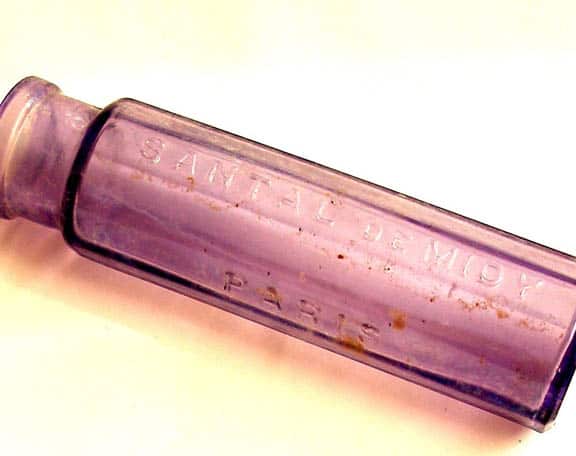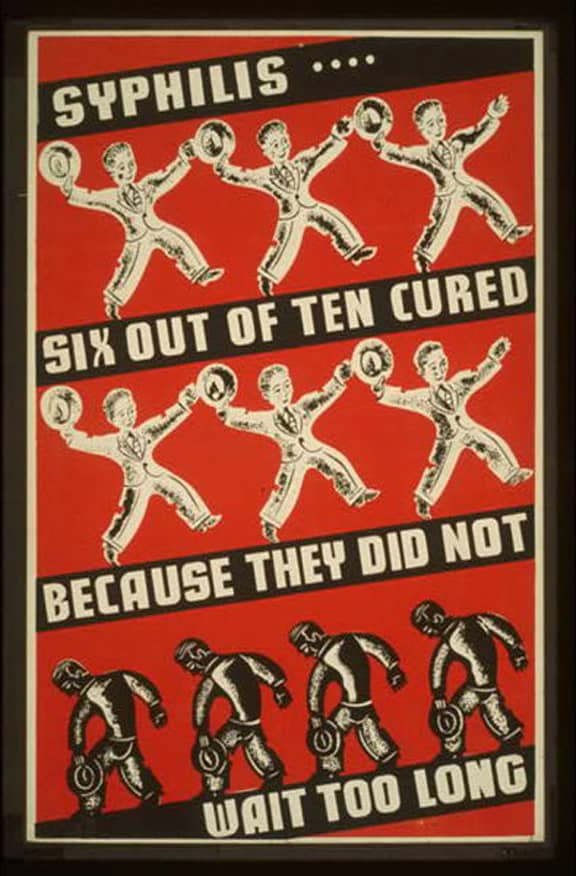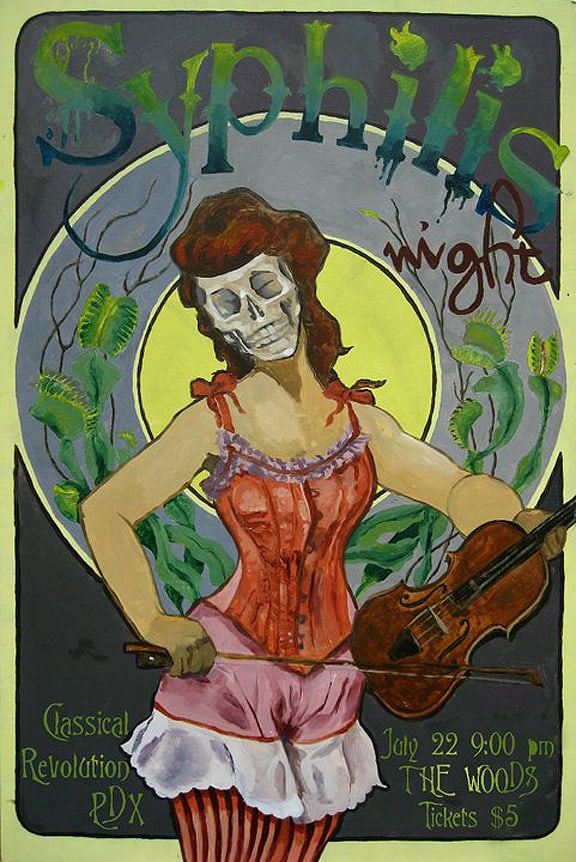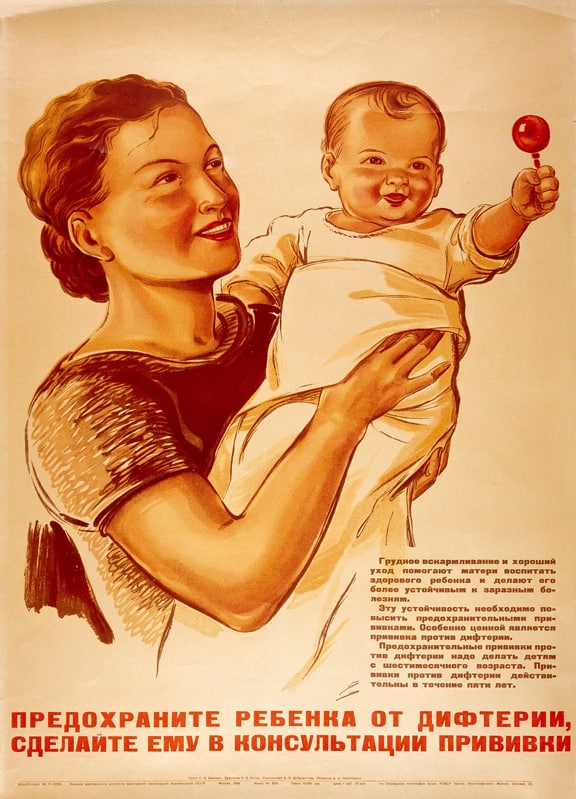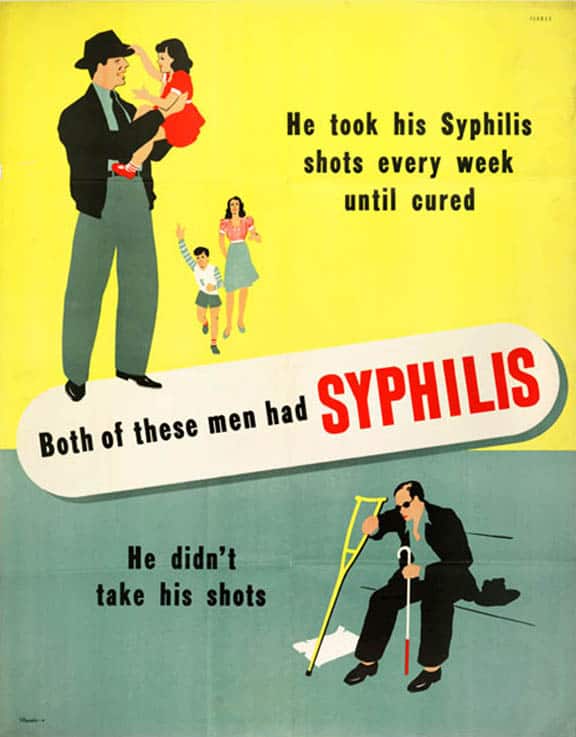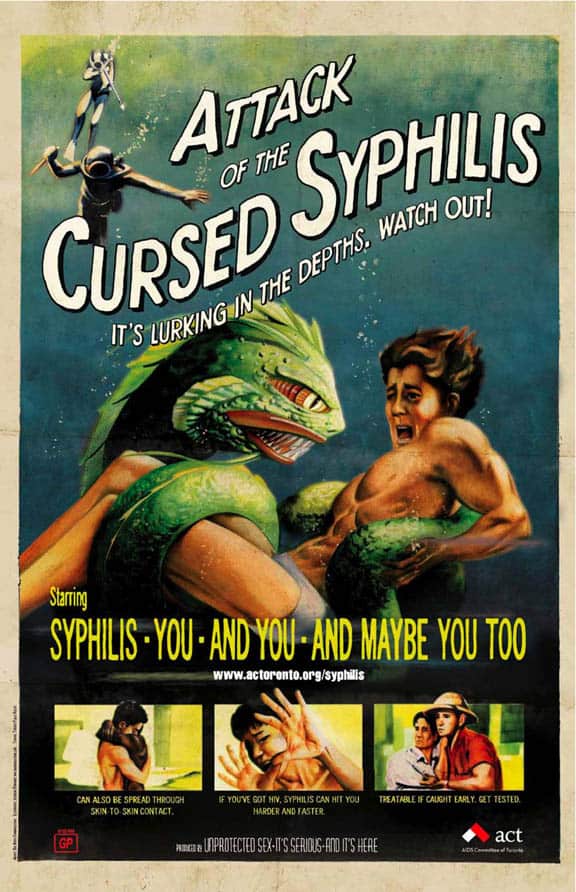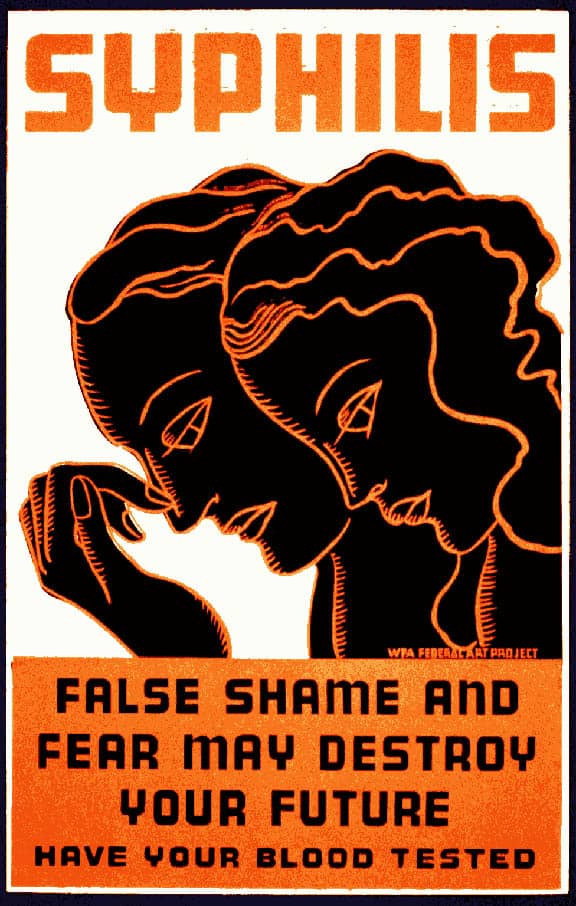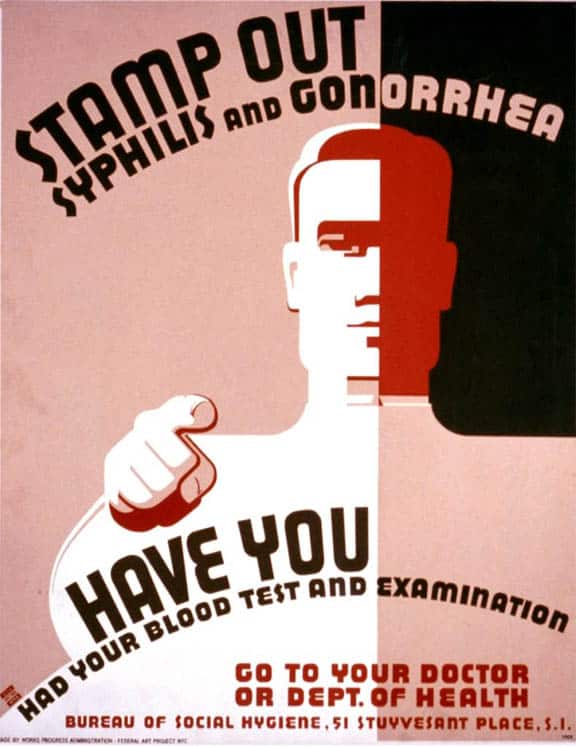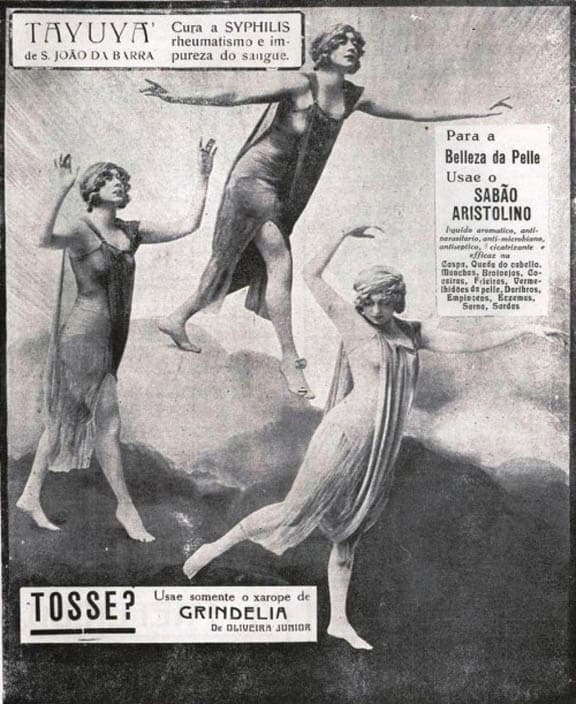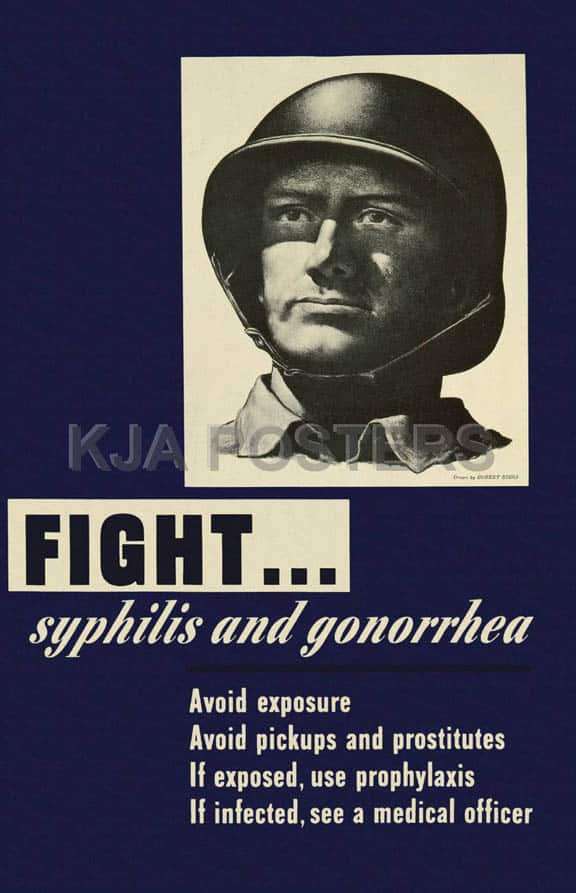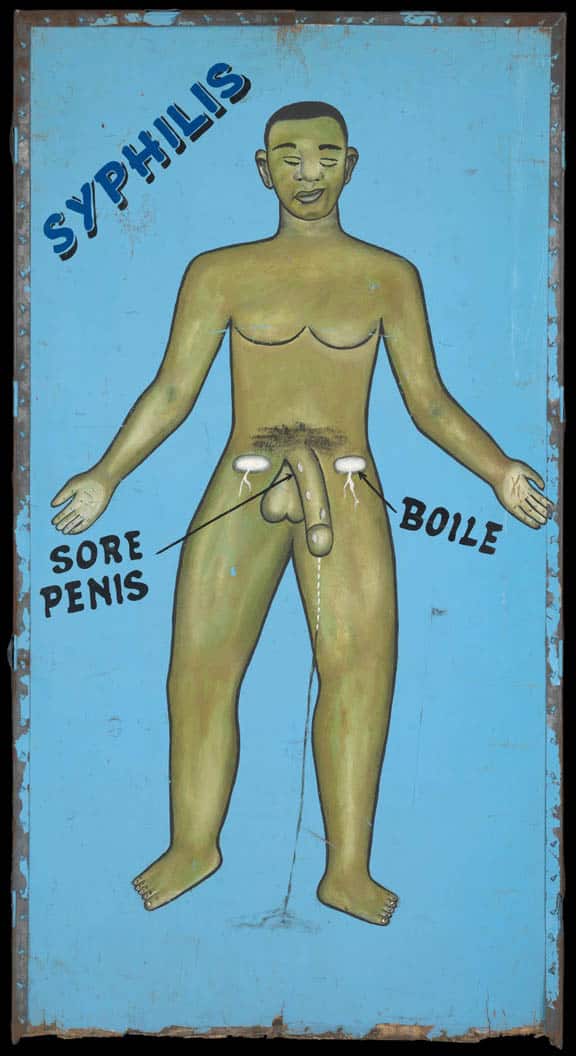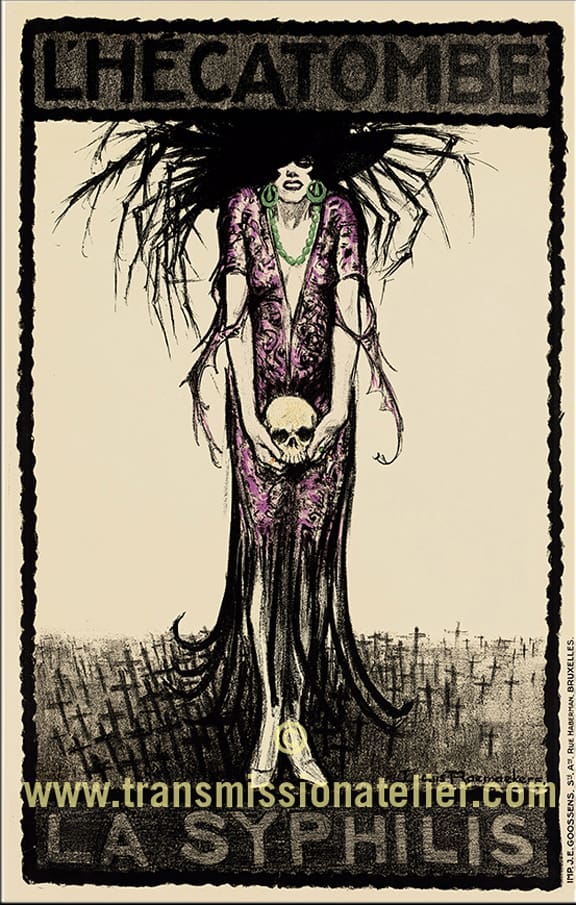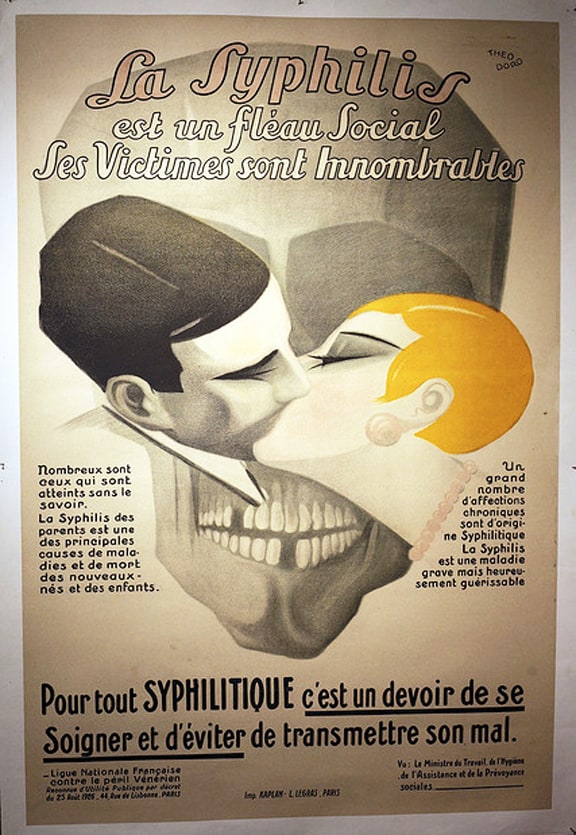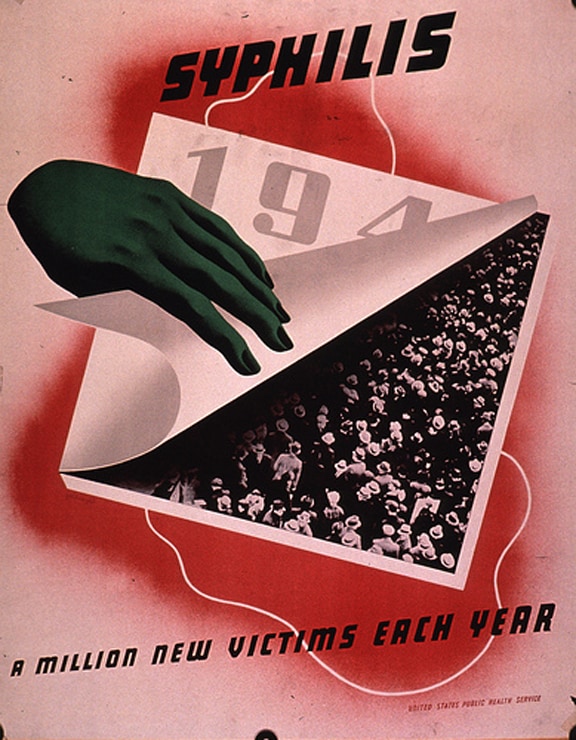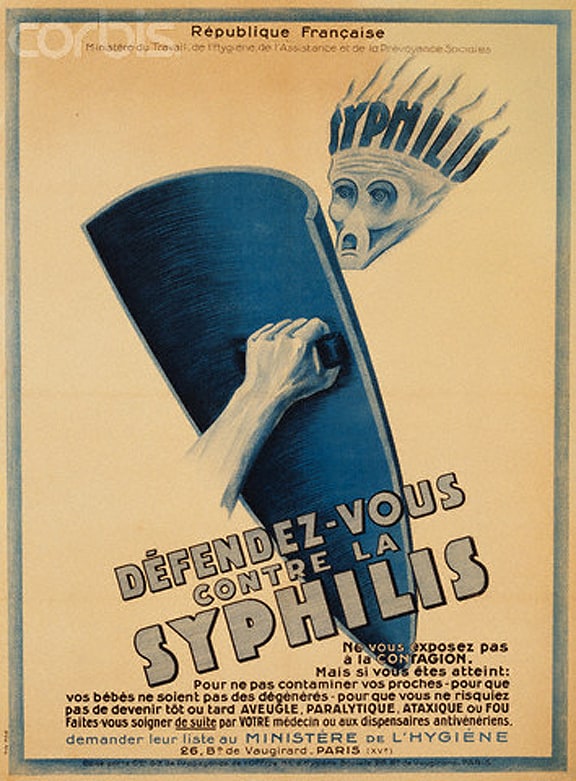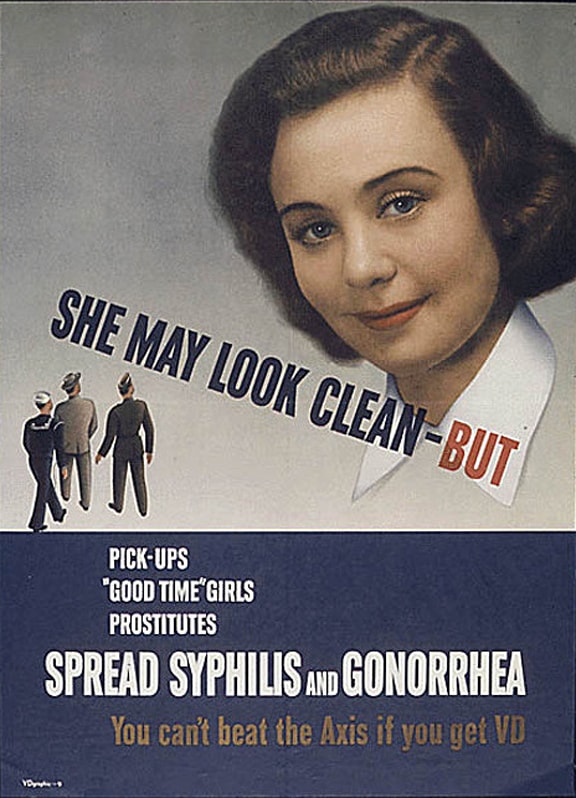While working on the recent post on the great SWIFT’S SYPHILITIC SPECIFIC (SSS), I came across some wonderful vintage posters from an international community of graphic designers. These posters are quite spectacular.
Read More: Swift’s Syphilitic Specific – “Hey, I’ve got Syphilis”
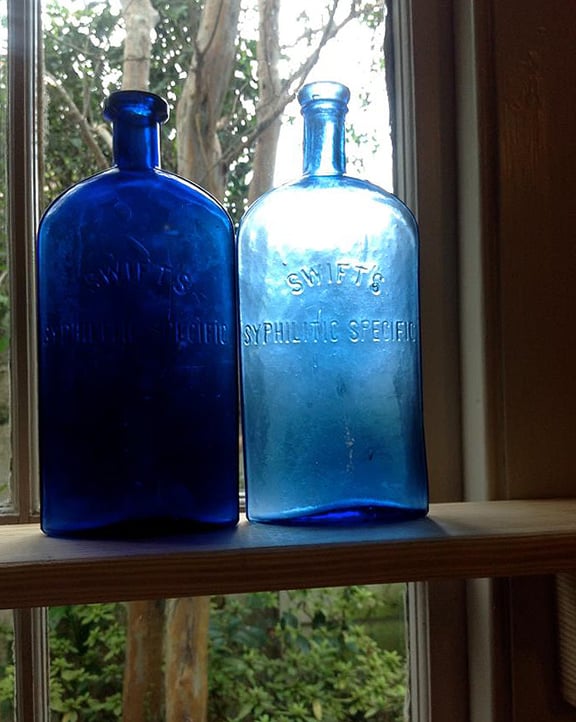
SWIFT’S SYPHILITIC SPECIFIC in natural light. The dark one is 8 1/2″ tall. The lighter one has a longer neck, 9″ tall. Close inspection suggests these two bottles were from the same mold. Fairly dramatic difference in the blue – c.a. (Charles Aprill)
 Syphilis is a sexually transmitted infection caused by the spirochete bacterium Treponema pallidum subspecies pallidum. The primary route of transmission is through sexual contact; it may also be transmitted from mother to fetus during pregnancy or at birth, resulting in congenital syphilis. Other human diseases caused by related Treponema pallidum include yaws (subspecies pertenue), pinta (subspecies carateum), and bejel (subspecies endemicum).
Syphilis is a sexually transmitted infection caused by the spirochete bacterium Treponema pallidum subspecies pallidum. The primary route of transmission is through sexual contact; it may also be transmitted from mother to fetus during pregnancy or at birth, resulting in congenital syphilis. Other human diseases caused by related Treponema pallidum include yaws (subspecies pertenue), pinta (subspecies carateum), and bejel (subspecies endemicum).
The signs and symptoms of syphilis vary depending in which of the four stages it presents (primary, secondary, latent, and tertiary). The primary stage classically presents with a single chancre (a firm, painless, non-itchy skin ulceration), secondary syphilis with a diffuse rash which frequently involves the palms of the hands and soles of the feet, latent syphilis with little to no symptoms, and tertiary syphilis with gummas, neurological, or cardiac symptoms. It has, however, been known as “the great imitator” due to its frequent atypical presentations. Diagnosis is usually via blood tests; however, the bacteria can also be visualized under a microscope. Syphilis can be effectively treated with antibiotics, specifically the preferred intramuscular penicillin G (given intravenously for neurosyphilis), or else ceftriaxone, and in those who have a severe pencillin allergy, oral doxycycline or azithromycin.
Syphilis is believed to have infected 12 million people worldwide in 1999, with greater than 90% of cases in the developing world. After decreasing dramatically since the widespread availability of penicillin in the 1940s, rates of infection have increased since the turn of the millennium in many countries, often in combination with human immunodeficiency virus (HIV). This has been attributed partly to unsafe sexual practices among men who have sex with men, increased promiscuity, prostitution, and decreasing use of barrier protection.

